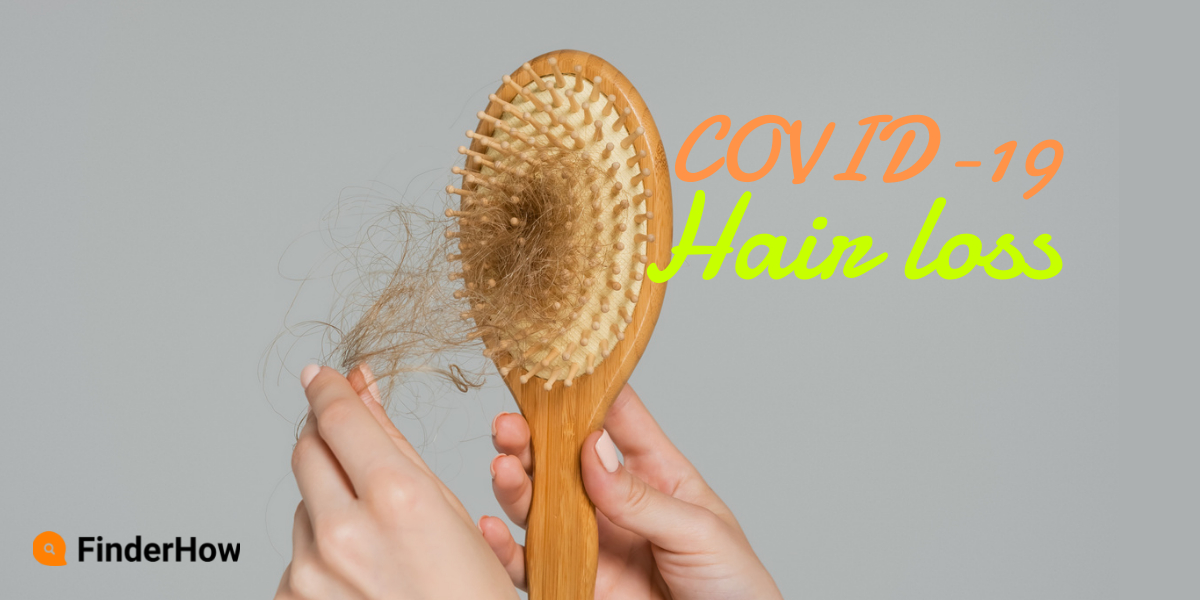Hair loss and COVID-19. What you need to know
Should You Be Worried About Hair Loss After COVID-19?
When it comes to COVID-related symptoms, you probably haven’t given much thought to your physical appearance in the last few years.
Whether it is respiratory distress or inflammation caused by COVID-19 that causes a loss of smell, most complications from the contagious
Viral infections are invisible to others. As the coronavirus has continued to infect people all over the world, patients have reported clumps of hair falling from their scalp months after COVID-19. Many people have wondered if COVID-19 can cause hair loss as a result of this development. Yes, but the more pressing question is whether people should be concerned about the long-term effects of these hair changes.
Hair loss after COVID-19
The human body contains approximately 5 million hair follicles that go through a three-step process. In the anagen stage,
hair grows and pushes through the skin. During the catagen stage, hair dies. Finally, during the telogen stage, hair falls out and regenerates.
You lose 50 to 100 hairs per day.
Hair follicles are in the anagen (growth) stage 85–90% of the time, which can take two to four years.
The telogen (rest) stage, on the other hand, may only last two to four months.
In some cases, the physical and emotional stress caused by COVID can result in what appears to be hair loss.
COVID causes hair to shed more than usual, so you’re not losing hair.
COVID-19 and Telogen effluvium
Acute telogen effluvium is the medical term for this type of temporary hair loss. COVID-induced stressors shock your body and disrupt the growth-rest cycle. As a result, hair shedding increases—as much as 30 to 50% of hair follicles are in the telogen stage compared to 5 to 10%—several months after becoming infected with COVID. Telogen effluvium is not only associated with COVID. It can occur due to a variety of factors, including viral infections, surgery, hospitalization, hormonal changes, and stress. COVID is a viral infection that can cause stress and hospitalization, which explains why some people experience hair loss. Physical stressors for COVID patients can be as minor as a high fever or being placed on a ventilator due to moderate-to-severe respiratory complications. In terms of mental stressors, dealing with COVID can have an impact on how you think and feel. These changes can cause stress hormones to be released, causing hair follicle stem cells to enter an extended resting phase. Stress, in particular, can alter cells at the base of hair follicles known as dermal papilla and inhibit molecules required for hair growth. The severity of hair loss is not always directly related to the severity of the illness; for example, some people with mild COVID symptoms may experience severe hair loss, while others with severe COVID symptoms may experience mild hair loss.
When does hair shedding start?
Unlike most COVID-19 symptoms, which appear days or weeks after the infection, hair shedding usually occurs two to three months later. In general,
non-COVID Telogen effluvium causes hair to shed after about three months. However, research over the last few years has revealed that COVID has accelerated the timeline. The median average onset of telogen effluvium was 45 days in one small study of 30 COVID patients. The delayed nature of these symptoms is what most people find so perplexing. Because more hair follicles than usual are dormant and have begun to shed, people usually notice changes in their hair when agitating the scalp. Hair clumps will appear initially when brushing your hair or after showering. Within a few weeks of noticing hair clumps, your hair will begin to thin out. It’s critical to remember that hair shedding is caused by a disruption in the growth-regeneration process, not by actual hair damage. Because the follicles are still present, hair will regrow over time.
How long does COVID cause hair loss?
The good news for those who are worried is that COVID-related hair loss is usually an acute problem that will eventually grow back.
Patience is required, though, as regrowth can take anywhere from six to nine months and potentially as many as 18 months to become complete again. Don’t be concerned if your hair stays sparse for an extended period of time. A centimeter of hair emerges every month. You’ll observe short, baby hairs on your head at first, which will thicken and fill out over time. It may take two years or more for women with longer hair to restore hair long enough for it to feel “full” again.
The most effective treatment For COVID-19 Hair Loss?
No drugs are suggested for treating acute instances of hair loss. Aside from waiting, the best method to prevent further hair shedding is to treat
your hair with care. When combing your hair, avoid tugging on it, and use a conditioner when bathing to reduce knots.
Curling irons, hair straighteners, or other devices that heat your hair may harm or diminish hair strands.
Wearing a cap in the weather can help protect against UV rays. Wearing hair in a tight-fitting ponytail or headband may be relaxing.
but the tension on the hair can break it down and make it more susceptible to coming out. Any hairdo that puts stress on your hair should be avoided. Stress-relieving techniques, such as yoga, meditation, or another type of exercise, are also helpful. In many instances,
The connection between acute hair loss and worry is cyclical. Losing your hair can cause unnecessary worry, which can exacerbate hair loss.
While the majority of instances are brief, COVID can result in persistent telogen effluvium that lasts for years.
Chronic hair loss is more common in people who have long-term COVID signs.
If your hair loss following COVID isn’t improving after a few months, call your primary care physician and request a recommendation from a dermatologist. They can assess your situation and recommend treatments to help decrease hair loss and regrow hair.







